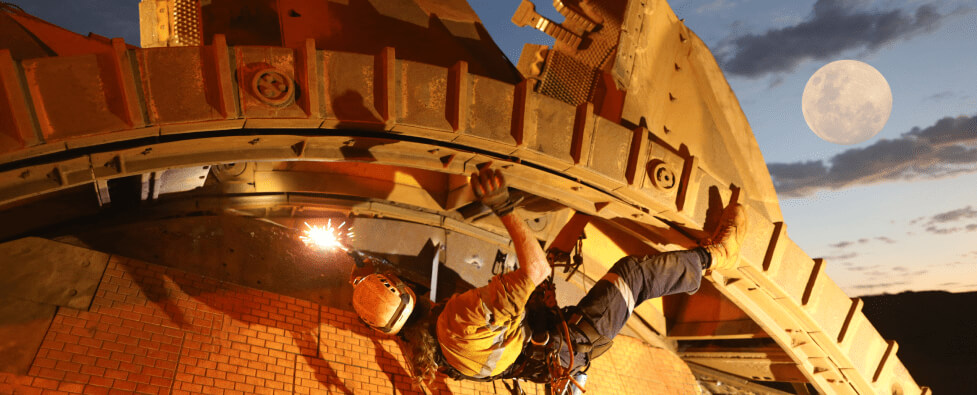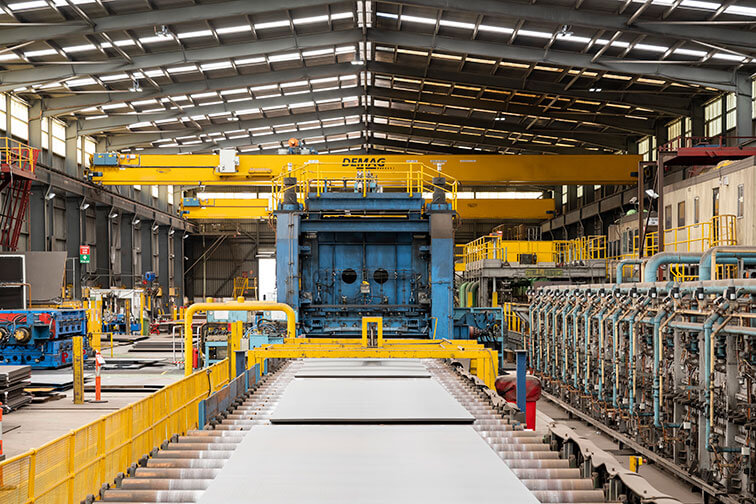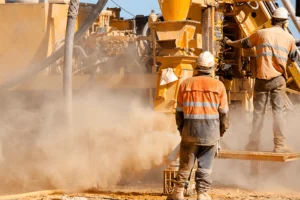At Bisalloy Steels, we aim to do our part in reducing pollution. We look to do this by deeply understanding our process and practices, its inputs, outputs and how our clients use our product.
Additionally, we have developed a roadmap that aims to see our business carbon emissions neutral by 2030.
For some time, we have monitored and reported the energy consumption and greenhouse gas emissions in the manufacturing of BISALLOY® steel products at the Australian production facility.
Sustainable practices at Bisalloy include;
- Our facility at Unanderra has been modified to capture the rainwater from the roof of our facility for use in the quenching process, thereby reducing our town water consumption by millions of litres.
- Upgrades to the Bisalloy hardening furnace, enabling us to use waste heat to preheat the plates entering the process, saving gigajoules of energy that would otherwise be lost.
- All lighting on-site has been upgraded to LED-based lamps to provide a safer working environment at night and save electricity.
- Our water system is a closed loop, meaning that wastewater from our process is reused by capturing it in our cooling water pond.
- Actively promoting the limitless recycling opportunity of our products throughout their lifecycle.
- We have implemented the ‘Quench Optimisation Project’ whereby our large pumps are only energised when required. This reduces our electricity usage considerably.
Since 2009, we have regularly reported our energy consumption and carbon emissions to the Clean Energy Regulator and the National Pollution Index Authority. Bisalloy is fully licensed to the EPA standards.
Carbon Neutral by 2030
With continuous research & development of sustainable improvements to our BISALLOY® steel production line, coupled with an understanding of our carbon footprint, energy consumption & waste generation through constant reporting, Bisalloy has developed a program to see us commit to being carbon-neutral at our Australian operations by 2030.
Although we are setting longer-term goals for net zero, and making meaningful, responsible change by exploring opportunities to reduce our carbon footprint, we continue to focus on daily improvements and celebrate the areas in which we can make an immediate impact to motivate us to build a more sustainable, future-focused business.
0
Environmental Incidents Since 2018
15%
Net electricity consumption reduction since 2019
5%
Net pollution reduced YOY
30%
Net pollution reduced since 2018

Recyclable Material – A Circular Economy
Recycling steel is a shining example of the circular economy in action, a testament to the power of sustainable practices that reduce waste, conserve resources, and minimize environmental impact. Steel, known for its exceptional durability and strength, becomes even more remarkable when viewed through the lens of its potential for use and recycling.
The continuous reuse, recycling and remanufacturing of BISALLOY® steel can have profound sustainability benefits once compared to the energy-intense process of producing steel from raw material. Furthermore, the advanced, unique heat-treatment process of Bisalloy’s quenched & tempered steel plate sees a remarkable enhancement of desired mechanical properties such as strength, ductility and hardness. These properties can significantly increase the lifecycle of equipment, components and the overall lifespan of fixed & mobile plant machinery.

Manufacturing process
How BISALLOY® Steel is made – The Quenching & Tempering Process.
Improving strength-to-weight ratios to improve fuel efficiency and energy consumption
The quenching & tempering process that BISASLLOY® steel undertakes sees a significant reduction of the overall amount of material required to meet specific strength specifications, resulting in weight savings that can lead to numerous sustainable benefits for vehicles, equipment, fixed and mobile plant and other industrial machinery typically seen to consume a large amount of energy and resources in its construction & lifecycle.
The connection between lighter steel, lighter vehicles & increased fuel efficiency is undeniable. With every tonne of steel shed from the weight of a structure or vehicle, without a loss in strength or structural integrity, we can see improvements in fuel efficiency, load-carrying capacities & ultimately, a reduction in CO₂ emitted through the manufacture of the product and its life on the field.




